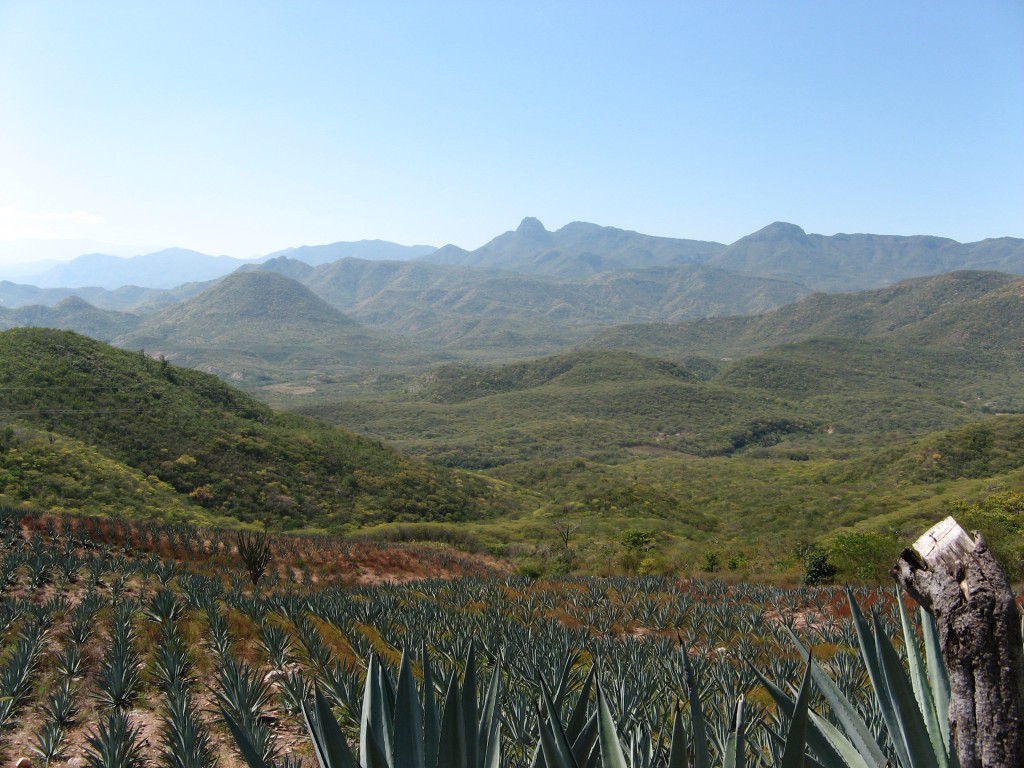Oaxaca and Coastal Chiapas
Located in southwestern Mexico, Oaxaca, Mexico’s fifth-largest state, is a varied and scenic wonder. Possessing a pleasant, mild climate, most of the state occupies a mile-high plateau encircled by the Sierra Madre del Sur. As evidenced by Oaxaca’s birdlist—the largest of any Mexican state—the birding here is wonderful. In addition to several rare endemics that are most easily found here, Oaxaca is home to a diverse variety of stunning Mexican and regional endemics. Gray-breasted Woodpecker, Beautiful, Bumblebee, Emerald-chinned, Green-fronted, Blue-capped, Cinnamon-sided and White-tailed Hummingbirds, White-throated and Dwarf Jays, Ocellated Thrasher, Boucard’s Wren, Slaty and Golden Vireos, Red-breasted Chat and Black-chested, Bridled and Oaxaca Sparrow are all prime examples. In addition to these more range restricted endemics we’ll search for many more widespread Mexican and regional endemics. Wedge-tailed Sabrewing, Golden-crowned and Canivet’s Emeralds, Russet-crowned Motmot, Citreoline Trogon, Pine Flycatcher, Chestnut-sided Shrike-Vireo, Crescent-chested, Golden-browed and Red Warblers, Yellow and Hooded Grosbeaks and Black-backed and Black-vented Orioles are examples of this latter category.
After much deliberation over which route provides us the best birding and comfortable lodging while minimizing long drives, our itinerary for this tour will begin and end in Mexico City. This will make round-trip airfare for participants as inexpensive as possible AND allow us to visit a couple of isolated areas for rare endemic birds with minimal distribution while reducing drive time along our route by more than six hours. All good things!
We begin in Mexico City, the most cost effective international gateway to Mexico from the UK and USA. We’ll climb karst limestone hills running through tropical landscapes near Cordoba, explore Mexico’s Gulf Coast in Veracruz, visit Caribbean slope lowlands and verdant cloud forests of Northern Oaxaca, travel southward through the Eastern highlands of Oaxaca, examine every corner of the arid Valley of Oaxaca (along with several ancient ruin sites!), continue south to the Pacific Coast of Oaxaca and Chiapas for a spectacular trio of Isthmus of Tehuantepec avian endemics, slide northwestward along the picturesque Pacific coast enjoying Oaxaca’s wondrous thorn forest habitats and off-shore riches before traversing the isolated Sierra de Miahuatlan for another trio of endemic birds on our return to Mexico City.
This route eliminates the need to backtrack in order to reach isolated habitat zones or pockets of endemic birds saving us a couple of very long travel days. More importantly, it provides us with a pelagic trip off of Southern Oaxaca and additional time in the thorn forest habitats along Oaxaca’s Pacific slope. The dramatic loss of thorn forest in recent years has made many of the highly sought species from this habitat much more difficult to find. Thus the extra time we spend here gives participants, not only greater comfort, but also a greatly increased opportunity to see all of Oaxaca’s thorn forest specialties. We’ll visit Coastal Chiapas and the Isthmus of Tehuantepec in order to find a trio of endemic birds limited to this small slice of the world. Only here can you fund the furtive Sumichrast’s (Cinnamon-tailed) Sparrow, captivating Rosita’s (Rose-bellied) Bunting and Giant Wren—the largest wren in the world! Additionally, we’ll search for wintering Fuertes’s Orioles, skulking Lesser Ground-Cuckoo and Lesser Roadrunner, elegant Long-tailed Manakin and numbers of wintering/migrating waterbirds and raptors.
Finally, we’ll complete our grand circle through the heart of Mexico as we explore the highlands near Cuernavaca on our return to Mexico City. The open pine woodlands with striking bunch-grass understory hold the world’s remaining Sierra Madre Sparrows. We’ll also search for hulking Striped Sparrows, the very local Strickland’s Woodpecker and noisy Transvolcanic Jays. A short journey to the Lerma marshes will pad our list with many waterbirds as we search for Aztec Rail and Black-polled Yellowthroat amid the cattails and reeds.
Birds are only part of the story. In fact, exciting birds often compete with majestic scenery, colorful works of art, tasty regional foods, historic ruins and wonderful Colonial atmosphere for our attention as we travel the width & breadth of Oaxaca, neighboring Chiapas, Veracruz and other areas along our route. You’ll experience habitats as varied as the landscape: pine-fir forest, pine forest, pine-oak forest, oak forest, arid scrub, thorn forest, cloud forest and tropical lowlands. Although some of our birding destinations are at high altitude, birding is generally along roadsides with no strenuous or prolonged hikes required. Due to the diversity of habitats we visit during our tour, we have compiled an incredible composite list of more than 570 species to date. Proof of the varied birdlife found in Oaxaca and environs, our tour has AVERAGED more than 420 species per tour over the past sixteen years. In 2009, on a circuit very similar to this year’s, we tallied an incredible 454 species, and each year’s total since 2000 has exceeded 400. While 400 species on our trip list is a goal to aspire to, we try to make sure each participant has the most fun possible while searching for the many specialty birds of the region while taking time to enjoy all that Oaxaca has to offer.
Leader: Kim Risen
| Intro | Itinerary | Tour Pricing and Information | Gallery | Birdlist | Registration |

